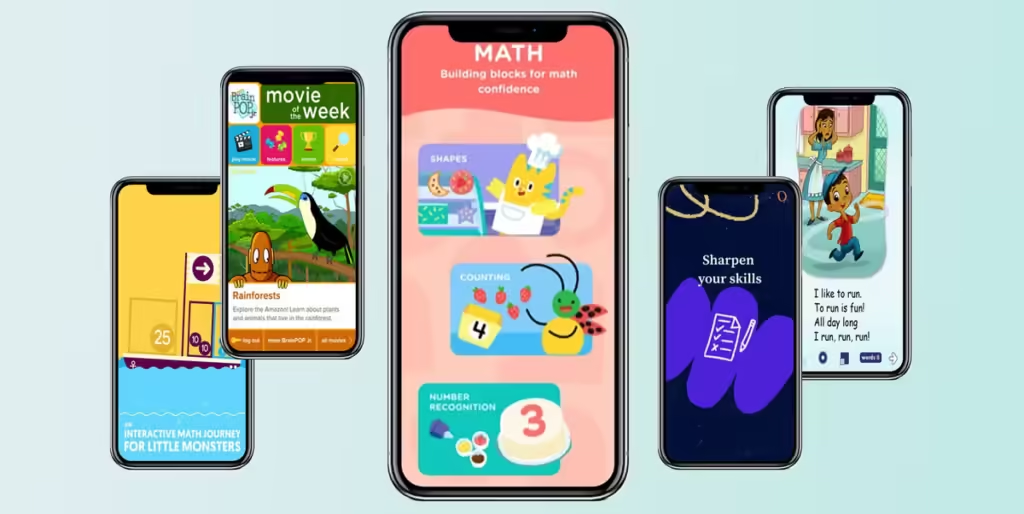How to Set Up and Use Popular Kids’ Apps
With the vast array of kids’ apps available today, parents can provide their children with fun, educational, and interactive experiences. However, setting up and using these apps effectively requires careful consideration of safety features and educational value. This article provides a step-by-step guide on how to set up and use popular kids’ apps, ensuring a safe and enriching environment for children.

Choosing the Right App
Research and Reviews Before downloading any app, conduct thorough research. Read reviews from other parents, educators, and trusted sources to gauge the app’s quality, safety, and educational value. Look for apps that are age-appropriate and align with your child’s interests and learning goals.
Educational Value Choose apps that offer educational content. Look for features that promote cognitive development, creativity, and problem-solving skills. Apps that provide interactive learning experiences, such as quizzes, puzzles, and activities, are highly beneficial.
Downloading and Installing the App
App Stores Download apps from reputable sources such as the Apple App Store or Google Play Store. These platforms have stringent security measures to protect users from malicious software. Avoid downloading apps from third-party websites.
Permissions and Privacy Settings During installation, review the app’s permissions and privacy settings. Ensure the app does not request unnecessary access to personal information. Adjust privacy settings to limit data sharing and protect your child’s privacy.
Setting Up Parental Controls
Built-in Controls Many kids’ apps come with built-in parental controls. Use these features to manage screen time, restrict in-app purchases, and filter content. Set up a PIN or password to prevent unauthorized changes to settings.
Device-Level Controls In addition to app-specific controls, use device-level parental controls. Both iOS and Android devices offer comprehensive parental control settings that allow you to manage app usage, block certain apps, and monitor activity.
Creating a Safe User Profile
Personal Information When creating a user profile for your child, avoid using their real name or personal details. Use a nickname or a generic username to protect their identity. Ensure that profile settings are set to private.
Avatar and Preferences Choose an appropriate avatar and set preferences that align with your child’s interests and age group. This makes the app more engaging and tailored to your child’s needs.
Exploring App Features
Tutorials and Guides Many kids’ apps offer tutorials and guides to help users navigate the features. Take the time to explore these resources with your child to ensure they understand how to use the app safely and effectively.
Interactive Elements Encourage your child to explore interactive elements such as games, quizzes, and activities. These features enhance the learning experience and keep your child engaged.
Educational Content Identify key educational content within the app. This may include reading materials, math exercises, science experiments, or creative projects. Therefore, guide your child through these resources to maximize the app’s educational value.
Monitoring and Engagement
Regular Monitoring Regularly monitor your child’s app usage to ensure they are using it safely and appropriately. Check for any changes in behavior or signs of excessive screen time. Adjust settings and usage limits as needed.
Engage with Your Child Engage with your child while they use the app. Participate in activities, ask questions, and provide guidance. This not only enhances the learning experience but also strengthens the parent-child bond.
Encouraging Balanced Usage
Screen Time Limits Set clear screen time limits to ensure a healthy balance between digital and offline activities. Therefore, encourage your child to take breaks, engage in physical activities, and spend time with family and friends.
Variety of Activities Encourage a variety of activities both within and outside the app. For example, if the app includes reading exercises, supplement it with physical books. If the app involves art projects, provide real-world art supplies.
Conclusion
In conclusion, setting up and using popular kids’ apps safely and effectively can provide a wealth of educational and interactive experiences for children. By choosing the right apps, setting up parental controls, creating safe user profiles, exploring app features, monitoring usage, and encouraging balanced activities, parents can ensure a positive and enriching digital environment for their children. Moreover, embrace the potential of kids’ apps to foster learning and creativity while maintaining a safe and controlled experience.



